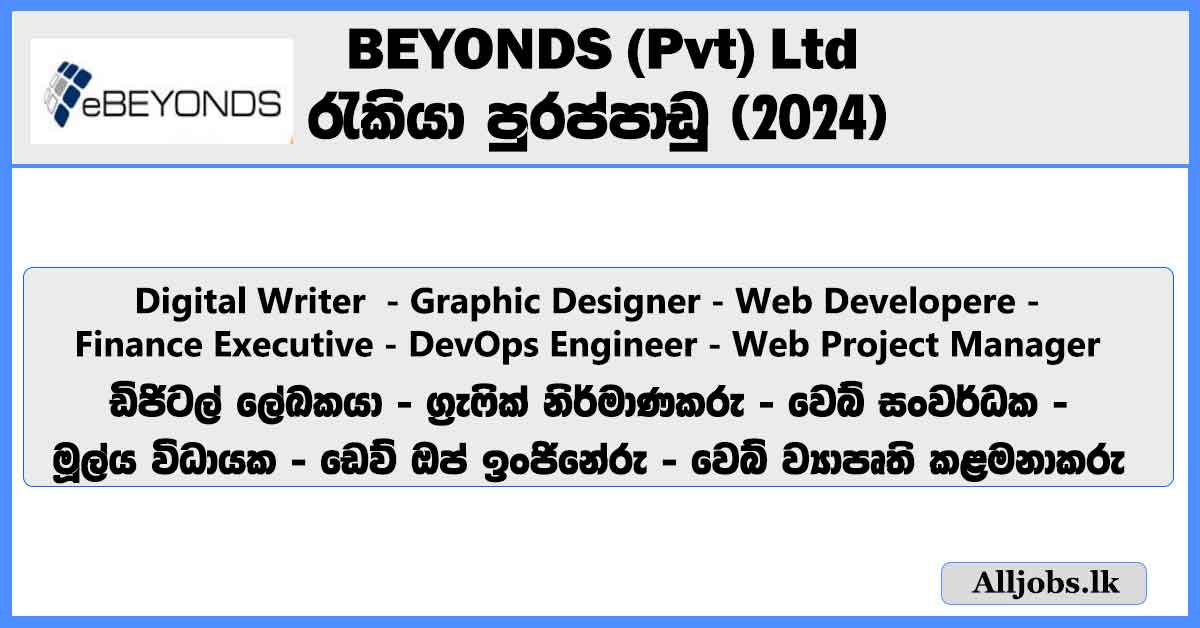Introduction
In today’s fast-paced world, maintaining a healthy work-life balance is crucial for overall well-being. This is especially challenging in high-paying professions, where the demands and expectations can be overwhelming. However, with the right strategies and mindset, it is possible to achieve harmony between your professional and personal life. In this article, we will explore effective ways to maintain work-life balance in the highest paying professions.
Table of Contents
- Understanding Work-Life Balance
- Setting Priorities
- Time Management Techniques
- Delegating and Outsourcing
- Maintaining Boundaries
- Effective Communication
- Physical and Mental Well-being
- Embracing Technology
- Creating Support Systems
- Work-Life Integration
- Taking Regular Breaks
- Flexibility and Adaptability
- Workplace Culture and Policies
- Managing Stress
- Hobbies and Personal Interests
- Family and Social Life
- Financial Planning
- Continuous Learning and Growth
- Building a Supportive Network
- Celebrating Achievements
- Finding Purpose and Meaning
- Self-Care and Self-Reflection
- Embracing Imperfections
- Maintaining Work-Life Balance in Remote Professions
- Conclusion
Understanding Work-Life Balance
Work-life balance refers to the equilibrium between work-related commitments and personal life. It involves effectively managing one’s time, energy, and attention to ensure that both professional and personal goals are met. It is essential to find the right balance that allows individuals to thrive in their careers while also nurturing their personal relationships, health, and well-being.
Setting Priorities
One of the key factors in maintaining work-life balance is setting clear priorities. Identify what truly matters to you in both your professional and personal life. By understanding your core values and long-term goals, you can make informed decisions about how to allocate your time and resources. Prioritize tasks and activities that align with your values and contribute to your overall well-being.
Time Management Techniques
Effective time management is crucial for achieving work-life balance. Here are some time management techniques to consider:
- Pomodoro Technique: Break your work into intervals of focused activity followed by short breaks. This helps maintain productivity while preventing burnout.
- To-Do Lists: Create daily or weekly to-do lists to prioritize tasks and stay organized. Tick off completed tasks to give yourself a sense of accomplishment.
- Time Blocking: Allocate specific time blocks for different activities, such as work, family time, exercise, and relaxation. This helps create a structured routine and ensures dedicated time for each aspect of your life.
- Eliminate Time-Wasting Activities: Identify and eliminate activities that consume excessive time without adding significant value to your life. This could include excessive social media use, unnecessary meetings, or multitasking.
Delegating and Outsourcing
In high-paying professions, the workload can often be overwhelming. Learn to delegate tasks that can be done by others, allowing you to focus on more critical responsibilities. If possible, consider outsourcing certain non-essential tasks to professionals or services. Delegating and outsourcing help reduce stress and free up time for activities outside of work.
Maintaining Boundaries
Establishing clear boundaries between work and personal life is vital for maintaining balance. Here are some strategies to help maintain boundaries:
- Separate Workspace: Create a dedicated workspace at home or in the office. This physical separation helps create a mental distinction between work and personal life.
- Set Working Hours: Define specific working hours and communicate them with your colleagues and clients. Avoid the temptation to constantly check emails or respond to work-related requests outside of these hours.
- Unplug and Disconnect: Take regular breaks from technology and disconnect from work-related communications during non-working hours. This allows for relaxation and quality time with loved ones.
Effective Communication
Clear and effective communication is essential in all aspects of life, including work-life balance. Here are some tips for effective communication:
- Express Your Needs: Clearly communicate your needs and expectations to your colleagues, superiors, and family members. Let them know when you require support or when you need time for personal matters.
- Learn to Say No: It is important to set boundaries and learn to say no when you are already overloaded with work or when a request conflicts with your personal priorities.
- Active Listening: Practice active listening when engaging in conversations. This demonstrates respect and empathy, fostering better relationships both at work and in personal life.
Physical and Mental Well-being
Maintaining good physical and mental health is crucial for overall well-being and work-life balance. Here are some practices to consider:
- Regular Exercise: Engage in physical activity regularly to boost your energy levels and reduce stress. Find activities that you enjoy, such as walking, running, yoga, or dancing.
- Healthy Eating Habits: Fuel your body with nutritious food to support your physical and mental well-being. Plan and prepare meals in advance to save time and ensure a balanced diet.
- Adequate Rest and Sleep: Prioritize getting enough sleep each night to recharge and rejuvenate. Establish a relaxing bedtime routine and create a sleep-friendly environment.
- Stress-Relief Techniques: Explore various stress-relief techniques such as meditation, deep breathing exercises, journaling, or engaging in hobbies. Find what works best for you and incorporate it into your daily routine.
Embracing Technology
Technology can be a double-edged sword when it comes to work-life balance. While it can enhance productivity and flexibility, it can also blur the boundaries between work and personal life. Here are some tips for harnessing technology effectively:
- Use Productivity Apps: Utilize productivity apps and tools to streamline tasks, manage schedules, and stay organized. These can help improve efficiency and free up time for other activities.
- Establish Digital Boundaries: Set boundaries for technology use, such as turning off work notifications during non-working hours or designating specific “tech-free” zones in your home.
- Use Collaboration Tools: If you work in a team, leverage collaboration tools to enhance communication and productivity. These tools can facilitate seamless teamwork and reduce the need for constant in-person meetings.
Creating Support Systems
Having a strong support system is crucial for maintaining work-life balance. Surround yourself with individuals who understand and support your goals and values. Here are some ways to create support systems:
- Family and Friends: Cultivate relationships with family and friends who provide emotional support and understanding. Make time for meaningful connections and prioritize spending quality time with loved ones.
- Mentors and Role Models: Seek guidance from mentors or role models who have successfully achieved work-life balance in their highest paying professions. Learn from their experiences and strategies.
- Professional Networks: Join professional networks and associations related to your field. These networks can provide valuable resources, mentorship opportunities, and a sense of community.
Work-Life Integration
Work-life integration is an alternative approach to work-life balance, where work and personal life are seamlessly integrated. This approach recognizes that there will be times when work demands more attention and other times when personal life takes precedence. Here are some ways to integrate work and personal life effectively:
- Flexible Work Arrangements: Explore flexible work arrangements, such as remote work or flexible hours, that allow you to balance work and personal commitments more effectively.
- Incorporate Personal Activities: Integrate personal activities into your work schedule, such as exercising during lunch breaks or attending family events during work-related travels.
- Shared Values and Goals: Find an alignment between your personal values and the mission of your profession. This creates a sense of purpose and makes work feel more meaningful.
Taking Regular Breaks
Taking regular breaks is essential for productivity, creativity, and overall well-being. Here are some tips for incorporating breaks into your daily routine:
- Microbreaks: Take short breaks throughout the day to stretch, walk around, or simply relax. These brief pauses help refresh your mind and prevent mental fatigue.
- Vacations and Time Off: Plan and take regular vacations and time off to recharge and rejuvenate. Use this time to engage in activities you enjoy and spend quality time with loved ones.
- Weekend Rituals: Establish weekend rituals that allow you to unwind and disconnect from work. Engage in activities that help you relax and recharge for the upcoming week.
Flexibility and Adaptability
Flexibility and adaptability are essential traits for maintaining work-life balance in high-paying professions. Here’s how you can cultivate these qualities:
- Embrace Change: Embrace change as a natural part of life and be willing to adapt to new circumstances. This mindset helps reduce stress and facilitates a smoother transition between work and personal life.
- Embrace Imperfections: Strive for progress, not perfection. Accept that there will be times when work-life balance may be challenging, and it’s okay to make adjustments along the way.
- Be Open to Opportunities: Remain open to new opportunities that align with your values and priorities. Assess each opportunity carefully to ensure it contributes positively to your work-life balance.
Workplace Culture and Policies
The workplace culture and policies play a significant role in work-life balance. Here’s how organizations can create a supportive environment:
- Flexible Work Policies: Implement flexible work policies that allow employees to have control over their schedules and work arrangements. This includes options for remote work, flexible hours, and parental leave.
- Supportive Managers: Train managers to be supportive and understanding of employees’ work-life balance needs. Encourage open communication and provide resources for work-life balance.
- Work-Life Balance Initiatives: Introduce initiatives such as wellness programs, employee assistance programs, and stress management workshops. These initiatives promote work-life balance and overall well-being.
Managing Stress
Stress is a common challenge in high-paying professions. Here are some strategies to manage stress effectively:
- Identify Stress Triggers: Identify specific situations or factors that trigger stress in your professional and personal life. Once identified, develop strategies to cope with them effectively.
- Stress-Relief Activities: Engage in stress-relief activities such as exercise, meditation, hobbies, or spending time in nature. Find activities that help you relax and unwind.
- Seek Support: Reach out to colleagues, friends, or professionals for support when experiencing high levels of stress. Sometimes, talking about your challenges can provide valuable perspective and support.
Hobbies and Personal Interests
Nurturing hobbies and personal interests is essential for work-life balance. Here’s why it’s important and how to incorporate them:
- Balance and Fulfillment: Hobbies and personal interests provide a sense of balance and fulfillment outside of work. They allow you to explore your passions and engage in activities that bring you joy.
- Schedule Time for Hobbies: Set aside dedicated time for hobbies and personal interests in your schedule. Treat these activities as non-negotiable and prioritize them as you would with work-related commitments.
- Try Something New: Explore new hobbies and interests to expand your horizons. This can spark creativity, boost motivation, and introduce new experiences into your life.
Family and Social Life
Nurturing family and social relationships is crucial for a fulfilling work-life balance. Here’s how you can prioritize these aspects:
- Quality Time: Make a conscious effort to spend quality time with your family and loved ones. Engage in activities that foster connection and create lasting memories.
- Open Communication: Maintain open and honest communication with your family and loved ones about your work commitments and the importance of work-life balance. This helps them understand and support your journey.
- Create Rituals: Establish regular rituals or traditions with your family and friends. This can be a weekly family dinner, game night, or a monthly outing. These rituals create a sense of togetherness and strengthen relationships.
Financial Planning
Financial planning is a crucial aspect of work-life balance, as it helps alleviate stress and provides a sense of security. Here’s how you can approach financial planning:
- Set Financial Goals: Define your financial goals and create a plan to achieve them. This includes saving for emergencies, retirement, and other long-term objectives.
- Budgeting: Develop a budget to track your income and expenses. This helps you make informed financial decisions and ensures a healthy balance between spending and saving.
- Seek Professional Advice: Consider consulting with a financial advisor to help you navigate complex financial decisions and optimize your financial planning strategies.
Continuous Learning and Growth
Continuous learning and personal growth are essential for maintaining work-life balance. Here’s how you can foster ongoing development:
- Professional Development: Engage in professional development activities such as attending conferences, workshops, or pursuing additional certifications. This helps you stay relevant and grow in your field.
- Personal Growth: Dedicate time to personal growth through reading books, listening to podcasts, or engaging in online courses. This allows you to expand your knowledge and explore new interests.
- Reflect and Evaluate: Regularly reflect on your experiences and evaluate your progress in maintaining work-life balance. Identify areas for improvement and set goals for ongoing growth.
Building a Supportive Network
Building a supportive network of colleagues, mentors, and like-minded individuals is crucial for work-life balance. Here’s how you can do it:
- Professional Associations: Join professional associations related to your field and attend networking events. This allows you to connect with individuals who share similar experiences and challenges.
- Online Communities: Engage in online communities and forums where professionals discuss work-life balance and share strategies. This provides a platform for support and advice.
- Mentorship: Seek mentorship from individuals who have successfully achieved work-life balance in high-paying professions. Their guidance and insights can be invaluable in navigating your own journey.
Frequently Asked Questions (FAQs)
- FAQ 1: What are some practical tips for maintaining work-life balance in high-paying professions?
- Answer: Some practical tips include setting boundaries, prioritizing self-care, delegating tasks, and effective time management.
- FAQ 2: Is it possible to maintain work-life balance in high-paying professions?
- Answer: Yes, it is possible to maintain work-life balance in high-paying professions with proper strategies, prioritization, and support systems.
- FAQ 3: How can technology help in maintaining work-life balance?
- Answer: Technology can help in maintaining work-life balance by providing productivity tools, facilitating remote work, and enhancing communication efficiency.
- FAQ 4: What are the benefits of work-life balance?
- Answer: Work-life balance promotes overall well-being, reduces stress, improves mental health, enhances productivity, and fosters healthier relationships.
- FAQ 5: How can I overcome guilt or pressure when prioritizing personal life over work?
- Answer: Remember that prioritizing personal life is essential for long-term well-being. Communicate your boundaries clearly, seek support, and remind yourself of the importance of balance.
- FAQ 6: How can I effectively communicate my work-life balance needs to my employer?
- Answer: Schedule a meeting with your employer or supervisor to discuss your needs openly and honestly. Explain how work-life balance benefits both you and the organization in terms of productivity and well-being.
Conclusion
Maintaining work-life balance in high-paying professions is a challenging but achievable goal. By implementing strategies such as time management, effective communication, self-care, and support systems, individuals can create harmony between their professional and personal lives. Remember that work-life balance is a continuous journey that requires constant evaluation and adjustment. Prioritize your well-being, set boundaries, and make intentional choices that align with your values and priorities. By doing so, you can achieve fulfillment and success in both your career and personal life.




